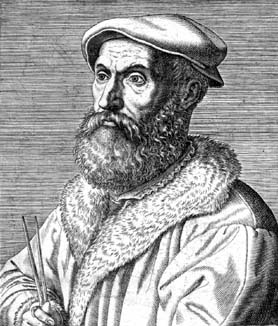Edward Waring
 Edward Waring, despite not being very well known even today, was one of the most talented mathematicians of his time. He was cursed by the inability to properly communicate his ideas coupled with a fascination for esoteric mathematical topics. One of his biographers wrote:
Edward Waring, despite not being very well known even today, was one of the most talented mathematicians of his time. He was cursed by the inability to properly communicate his ideas coupled with a fascination for esoteric mathematical topics. One of his biographers wrote:Waring was one of the profoundest mathematicians of the eighteenth century; but the inelegance and obscurity of his writings prevented him from obtaining that reputation to which he was entitled.Waring was born in Shropshire, England in 1736. His father was a successful farmer and he attended school in Shrewsbury. In 1753, he entered Magdalene College at Cambridge. Originally, he entered as a sizar which meant that he paid a reduced admission fee but had to take on extra duties at the school.
His mathematical abilities soon drew the attention of his teachers. He graduated with top honors in 1757. One year after graduation, he was elected as a fellow to Magdalene College. In 1759, his name was put forward as the Cambridge Lucasian Chair of mathematics even though he was only two years past graduation.
William Powell, one of the professors at St. John's College challenged this nomination. Powell wrote a pamphlet questioning Waring's mathematical knowledge. Waring responded to this with his own pamphlet and Powell wrote a rebuttal. The debate finally ended when a famous mathematician of this time, John Wilson, intervened on Waring's behalf. In 1760, Edward Waring became Lucasian Professor of Mathematics. He had not yet turned 24.
In 1762, Waring published his most famous work: Meditationes Algebraicae. The work shows his thoughts on topics in equations, number theory, and geometry. The work was well received and he was elected to the Royal Society in 1763. He would later extend this work into three separate volumes.
Despite the book's high praise by many top mathematicians, the book was not widely read among mathematicians. In 1764, an influential math book claimed that there were no first rate mathematicians in England. Waring was alarmed at being overlooked but admitted:
... never could hear of any reader in England, out of Cambridge, who took pains to read and understand it ...Even though he was the Lucasian Professor of Mathematics, he decided to also study medicine. He received a medical degree in 1767. His medical career did not go as well as he had hoped and he gave up medicine by 1770. In 1776, he married Mary Oswell.
After quitting medicine, he expanded his original mathematical work: releasing a volume on geometry in 1770 and a volume on number theory and equations in 1772.. In these works, he did significant work with symmetric functions and also the cyclotomic equation. His ideas were a precursor to what later became group theory. In number theory, he presented a problem that was later solved by David Hilbert in 1909.
Despite being the Lucasian Professor, he did not lecture much. In fact, he did not correspond very often with the mathematicians of his day. His works were not systematic and most of his ideas were hundreds of years ahead of their time.
As he grew older, he struggled with poverty. In 1795, three years before his death, he resigned from the Royal Society because he could not afford its dues. He died on August 15, 1798.




